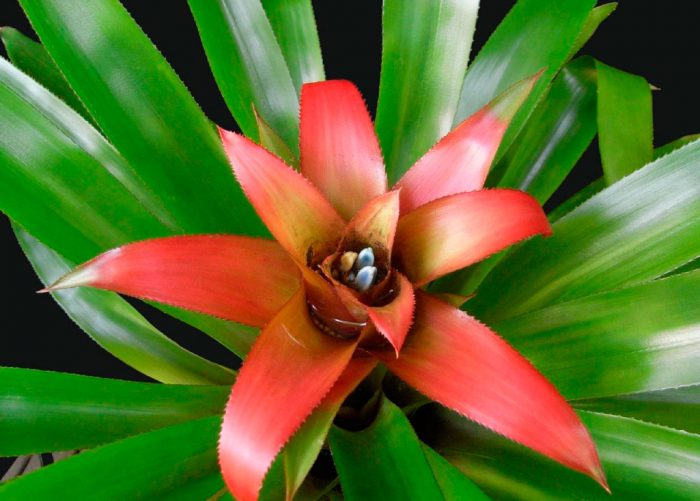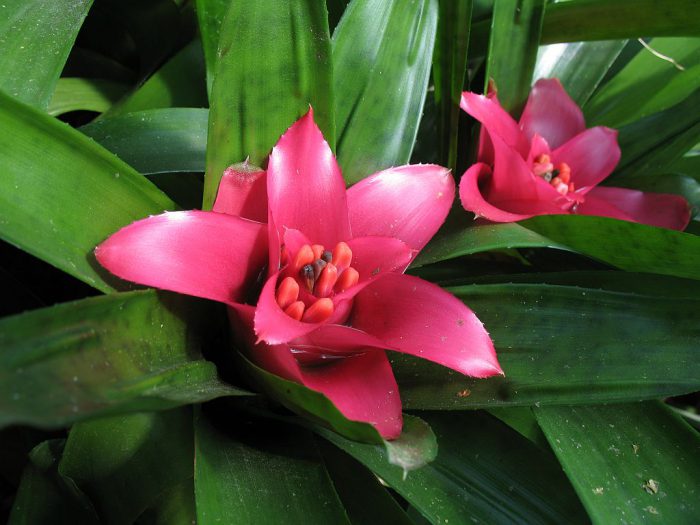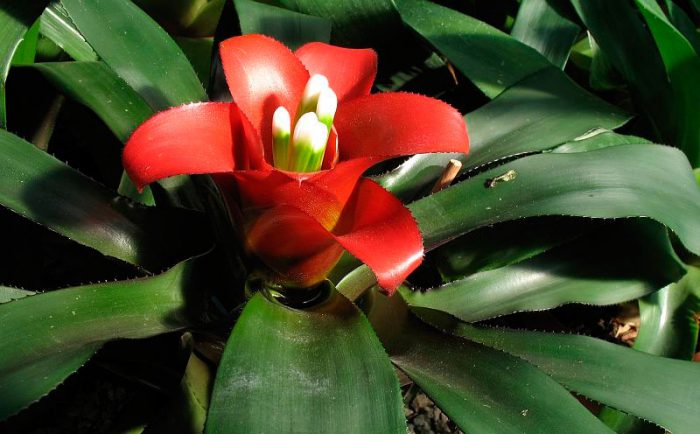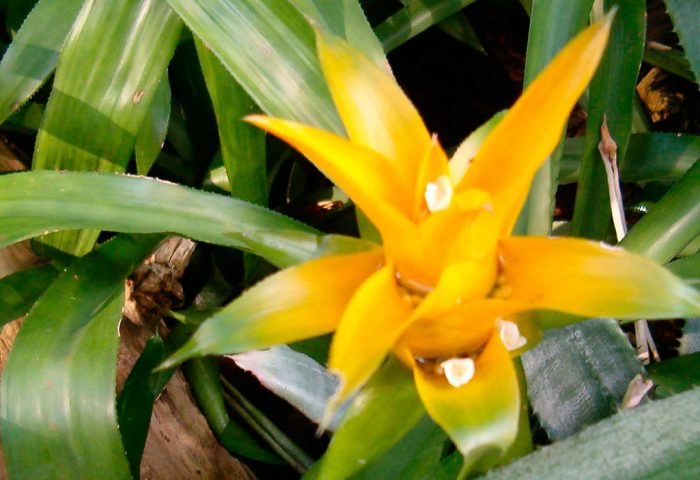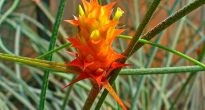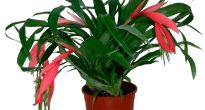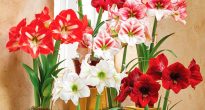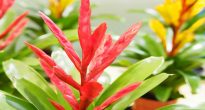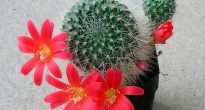The genus Nidularium is directly related to the Bromeliaceae family. It brings together about 80 species of various plants. In nature, this plant can be found in the tropical forests of Brazil.
This genus is represented by semi-epiphytic, as well as epiphytic plants, which are stemless. They have a dense large rosette, in which there are 15 to 20 broad-linear leaves, the tips of which are pointed. Often, the edges of the leaves are finely serrated. Small flowers, collected in complex spike-shaped inflorescences, do not represent any decorative value. The inflorescences are hidden by deep colored bracts, and in a large number of species they acquire a red color before the beginning of the flowering period.
When flowering ends, the leaf rosette dies off, but at the same time several lateral children are formed in it. They take root rather quickly and soon begin to bloom. This allows this plant to grow over a fairly large area.
Caring for nidularium at home
It is not difficult to grow nidularium in indoor conditions, you just need to follow a few not very complicated rules.
Illumination
The plant from the first spring to the last autumn weeks needs a bright, but diffused light (approximately 2600-3000 lux). In this regard, in autumn, as well as in spring, it is recommended to provide the flower with additional lighting.
Experienced florists advise placing it on the windowsill of a window located in the western or eastern part of the room. The northern window is not suitable due to the fact that there is little light and flowering may not come because of this, and the southern window is due to the presence of direct rays of the sun.
Temperature regime
In summer, nidularium feels comfortable at temperatures from 22 to 25 degrees, which is quite the same as the climate of middle latitudes. In winter, it is recommended to place it in a cool place (18–20 degrees), but the temperature should not drop below 16 degrees, otherwise the heat-loving flower may die.
How to water
In the spring and summer period, water should be abundant. The substrate must not be allowed to dry out, and it is necessary that it is constantly slightly moistened. During watering, water is poured directly into a leaf outlet.
When kept cold in winter, as well as if it is cool enough in summer, it is recommended to water less.And experienced flower growers advise not to water the nidularium at all at this time, but only to spray its foliage.
You need to water it with extremely soft and settled water, which should be slightly warm.
Humidity
In order for a plant to grow and develop normally, it needs high humidity. Therefore, it is recommended to grow it in humid greenhouses or florariums. If this is not possible, then the humidity can be increased by systematically spraying the flower (at least 2 times a day). Also, to increase the humidity, you can pour expanded clay into the pallet and pour some water. You can also do this by placing a container of water next to the nidularium.
Earth mix
A suitable soil mixture consists of light turf, humus, peat and leafy soil, which are taken in equal shares, and you also need to add a little finely chopped pine bark, charcoal and sand (you can replace it with perlite). You can also buy a ready-made mixture for bromeliads.
It is best to plant a plant in a fairly wide pot, since it grows quickly enough. And don't forget about a good drainage layer.
Top dressing
Top dressing is carried out from mid-spring to mid-autumn, once every 4 weeks, while fertilizers are applied to the soil along with watering. For this, a special fertilizer for bromeliads is suitable. You can also take fertilizer for indoor plants, but use only ¼ of the recommended dose on the package. In winter, they do not feed.
Transplant features
The plant is transplanted only if necessary, if the plant grows very strongly, while occupying the entire soil area. Leaf rosettes must be planted at the same level as before. If they are deepened, then the nidularium may die.
Reproduction methods
Can be easily propagated by daughter outlets (babies). So, you can divide the whole jacket during the transfer. When separating the daughter outlet, it is necessary that it has at least 4 leaves, since in this case it will already have a root system.
You can grow this flower from seeds. In this case, flowering will occur only in the 4th year of the flower's life.
Pests and diseases
Can settle on the nidularium mealybug and a shield. The infected plant must be treated with special chemicals.
The plant may get sick, if the rules for care are not followed. For example:
- the tips of the leaves dry - low air humidity;
- the appearance of light brown spots - the plant is hit by direct rays of the sun;
- if the plant is watered too abundantly, then it may die.
Video review
Main types
Only a few types of nidularium are grown at home.
Nidularium innocentii
It has rather long leaves of about 30-50 centimeters, while their width is 4-5 centimeters. The underside is colored magenta and the top is dark green with a reddish tint. The flower stalks on which the inflorescences are formed are rather short. Bracts are deep red in color. Flowering lasts from June to October. There are variegated varieties that have pale longitudinal stripes.
Nidularium billbergioides
The foliage of this species is colored deep green and reaches 50–70 centimeters in length and 3-4 centimeters in width. The inflorescences are attached to thin and tall, straight peduncles that grow directly from the leaf rosette. Seven centimeter bracts are lemon yellow, but after flowering ends, they turn green. Flowering is observed from May to October.
Nidularium brilliant (Nidularium fulgens)
leaves of saturated green color, having dark green spots, reach 30 centimeters in length and 3 centimeters in width. The outer side of the leaf has a lighter color.The difference between this species and others is that it has brownish upward curved spines, reaching 4 centimeters in length. They attach to the edges of the leaves. The thorns in the center are smaller and turn bright red at the beginning of the flowering period.

